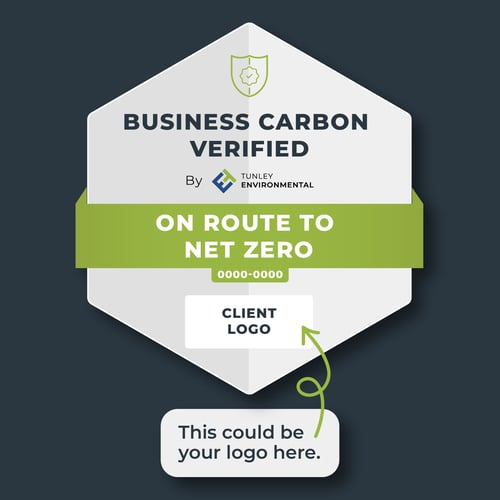As businesses strive to meet changing environmental standards, understanding and implementing a Carbon Reduction Plan (CRP) in line with the UK government's Procurement Policy Note (PPN) 06/21 is essential. This plan serves not just as a compliance mechanism but as a guide for organisations working towards sustainable operations.
This article offers a roadmap through the key phases involved, including calculating your baseline emissions, implementing strategic reduction measures and the critical steps for publishing and maintaining your plan.
What is PPN 06/21?
PPN 06/21 is a directive issued by the UK government aimed at integrating carbon reduction and sustainability into public sector procurement. Effective from September 2021, it requires suppliers bidding for major government contracts worth over £5 million per annum to commit to achieving Net Zero by 2050 and to have a detailed Carbon Reduction Plan. This ensures that only those committed to sustainable practices are considered for significant public contracts.
Step 1: Calculate Your Baseline Emissions
The first step is to calculate total emissions starting from your baseline year. To compile your baseline emissions, it's important to understand and categorise emissions into Scope 1, Scope 2 and Scope 3, as these help in identifying where emissions originate from and how they are produced. Scope 1 covers direct emissions from owned or controlled sources, Scope 2 includes indirect emissions from the generation of purchased electricity, steam, heating, and cooling, while Scope 3 encompasses all other indirect emissions that occur in a company’s value chain.
- Common Sources of Emissions
Identifying common sources of emissions within each scope is pivotal. For Scope 1, this might include emissions from company vehicles and onsite fuel combustion. Scope 2 emissions are derived from purchased electricity and heating, whereas Scope 3 emissions, which often represent the bulk of a company's carbon footprint, include emissions from waste disposal, business travel and the production and transportation of purchased materials. Scope 3 has 15 categories of which five are mandatory: Upstream Transportation and Distribution, Waste, Business Travel, Employee Commuting and Downstream Transportation and Distribution. The process can be streamlined by employing the services of sustainability professionals who specialise in data collection and analysis of carbon footprint.
- Use Standardised Conversion Factors
Employing standardised conversion factors is essential for converting various greenhouse gas emissions into comparable metrics. These factors facilitate accurate reporting and ensure consistency across different reporting periods and organisational structures. The government provides annually updated conversion factor spreadsheets and detailed methodologies to guide this process. Our trusted PhD-qualified consultants at Tunley Environmental can carry out this conversion for organisations looking to create their CRP.
- Collect data
The third step is to collect a full year's worth of quantifiable data for each emission source. For instance, measure your annual electricity consumption in kilowatt-hours (kWh) by reviewing utility bills or energy meters. Track the amount of natural gas used in cubic meters or therms and record fuel consumption for transportation in litres or gallons. Additionally, quantify waste generation by weight (kilograms or tons) and account for any other relevant emission sources such as refrigerants or chemical usage in appropriate units. This comprehensive data collection forms the foundation of your carbon footprint analysis.
Step 2: Develop and Implement Reduction Strategies
- Set Actionable Goals
Ensure a structured approach to carbon reduction by setting goals that are realistic, achievable and aligned with the Science Based Targets initiative. These targets should reflect the latest climate science and aim to limit global warming to well below 2°C, ideally to 1.5°C.
- Schedule Regular Reviews
Regularly reviewing and updating the CRP is essential for maintaining its effectiveness and relevance. This ongoing process ensures that the plan remains aligned with both the organisation's sustainability goals and the evolving regulatory environment.
- Document Completed and Future Initiatives
Documentation of both completed and planned initiatives contributes to transparent reporting and accountability. This includes detailing the actions taken, the outcomes and future strategies.
Step 3: Publish and Maintain Your Carbon Reduction Plans
- Transparency and Accountability
It is advisable that suppliers publish their latest CRP on their UK website, prominently linked on the homepage. Keeping previous CRPs available allows for progress monitoring. If a website is not available, suppliers must provide a written copy of the CRP upon request within 30 days. Additionally, the plan must clearly state approval by the board of directors or equivalent management body, including the approval date and must be signed off by a director or designated member, with their name and job title listed.
- Regular Updates and Board Approval
CRPs should align with the central government's PPN 06/21 requirements and be board approved. This approval process ensures that the CRP reflects the organisation's commitment to achieving Net Zero by 2050 or earlier. Regular updates, at least annually, are crucial to maintain the plan's relevance.
- Visibility on the Supplier’s Website
Suppliers must ensure that their CRP is easily accessible and clearly signposted on their website. This visibility not only meets compliance requirements but also demonstrates a transparent commitment to carbon reduction. Suppliers should also consider explaining any emissions increases and undertake further action to mitigate carbon emissions.
The Bottom Line
Throughout this article, we have highlighted the foundational stages of developing a PPN 06/21 Carbon Reduction Plan, from understanding its necessity in aligning with the UK's environmental mandates to the crafting of the plan itself. A comprehensive PPN 06/21 plan can help you position your business as a leader in environmental sustainability, enhance your eligibility for government contracts and contribute meaningfully to global carbon reduction efforts. While it may present challenges such as accurate emissions tracking and significant upfront investment, the long-term benefits of reduced carbon footprints, cost savings through energy efficiency and alignment with global climate goals make it a worthy project.
Organisations are encouraged to revisit and refine their strategies, ensuring that their efforts are both aligned with current best practices and are contributing to the broader goal of achieving Net Zero emissions by 2050.
Find out more about the PPN 06/21 and how it can benefit your organisation by booking a free consultation here.



